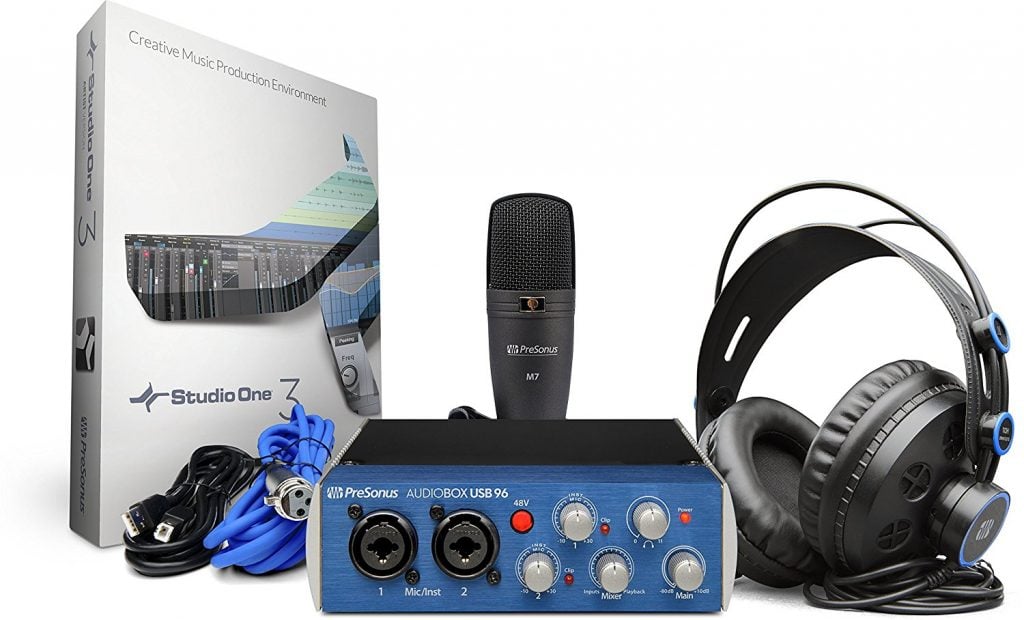USB Sound Card Adapter Nurbenn External Audio Adapter Stereo Sound Card Converter 3.5mm AUX Microphone Jack for Gaming Headset Earphone PS4 Laptop Desktop Windows Mac OS Linux, Plug Play. Limited time offer, ends 09/14. Specifications: USB Sound Card Adapter. This sound card is iPad Ready and has CC-mode with a USB mini socket. It also has a full USB port which can be used to connect a Mac or PC. The sound card from Steinberg is equipped with the loopback function which makes it easier to steam performances live on the internet. Product Highlights.
ION Audio Water Rocker - Frequently Asked Questions VIP 3.0 - How to Use Chord Progressions in Key Control Serato DJ - How to use a Mac Internal Sound Card for Serato DJ VIP 3.0 - How to use Key Control Denon DJ MC7000 - Complete Setup and Routing in Traktor Pro M-Audio Uber Microphone - Frequently Asked Questions.

best I could find:
Internal Microphone
The internal microphone operates independently from all other audio input ports and is always available. The internal microphone supports recording at bit depths of 16, 20, or 24 bits per sample and at sample rates of 44.1 kHz, 48 kHz, or 96 kHz. Audio recorded from the microphone is presented as a stereo data stream with the same data appearing on both the left and right channels. The microphone gain can be adjusted from -16.0 dB to +30.0 dB.
Line Input
The line input operates independently from all other audio input ports and is always available. The line input supports recording at bit depths of 16, 20, or 24 bits per sample and at sample rates of 44.1 kHz, 48 kHz, or 96 kHz. Audio recorded from the line input is presented as a stereo data stream. The line input gain can be adjusted from 0.0 dB to +30 dB.
During input of a 1 kHz, full-scale 1 VRMS sine wave (44.1 kHz input sample rate, 24-bit sample depth, 0.0 dB input gain, no weighting) the audio line input has the following nominal specifications:
Jack type: 3.5 mm stereo
Maximum input voltage: 1 VRMS (+2.22 dBu)
Minimum voltage input for full scale output: 31 mVRMS (-27.95 dBu) at input gain = +30 dB
Input impedance: > 20 kΩ
Frequency response: 20 Hz to 20 kHz, +0.5 dB/-3 dB
Signal-to-noise ratio (SNR): > 90 dB
Total harmonic distortion + noise (THD+N): < -75 dB (0.02%)
Channel separation: > 80 dB
Optical Digital Input
Based on playback of a 1 kHz, -1 dBFS 24-bit sine wave playback, 24-bit 44.1 kHz output sample rate (unless otherwise specified below) the digital audio input and output have the following electrical characteristics (nominal specifications):
FSI – input sample rates: 44.1 kHz, 48 kHz, or 96 kHz
Bits per sample: 16-bit or 24-bit
Signal-to-noise ratio (SNR): > 130 dB
Total harmonic distortion + noise (THD+N): < -130 dB (0.00003%)
Output Ports
The 15-inch MacBook Pro computer includes three audio output ports that can be used to play audio: internal speakers, combination line and headphone output, and S/PDIF optical digital output.
Internal Speakers
The internal speakers are automatically selected for audio output if no external device is detected at either the line/headphone output port or the S/PDIF optical digital output port. The internal speakers support a stereo data stream at bit depths of 16, 20, or 24 bits per sample and at sample rates of 44.1 kHz, 48 kHz, or 96 kHz.
Line/Headphone Output
The line/headphone output is automatically selected for audio output if no external device is detected at the S/PDIF optical digital output port. The line/headphone output supports a stereo data stream at bit depths of 16, 20, or 24 bits per sample and at sample rates of 44.1 kHz, 48 kHz, or 96 kHz. The line/headphone output volume can be adjusted from 0.0 dB to -95.25 dB.
During playback of a 1 kHz, full-scale sine wave (44.1 kHz output sample rate, 24-bit sample depth, 100 kΩ load, unless otherwise specified) the audio line output has the following nominal specifications:
Jack type: 3.5 mm stereo
Maximum output voltage: 2 VRMS (+8.24 dBu)
Output impedance: < 24 Ω
Frequency response: 20 Hz to 20 kHz, +0.5 dB/-3 dB
Signal-to-noise ratio (SNR): > 90 dB
Total harmonic distortion + noise (THD+N): < -80 dB (0.01%)
Channel separation: > 75 dB
Note: For best results, equipment plugged into the line/headphone output jack should not connect the audio ground to other grounds, such as the chassis or 'green-wire' ground.
S/PDIF Optical Digital Output
The S/PDIF optical digital output is automatically selected when a S/PDIF optical digital output external device is detected. The S/PDIF optical digital output supports a stereo data stream at bit depths of 16, 20, or 24 bits per sample and at sample rates of 44.1 kHz, 48 kHz or 96 kHz in PCM format. In addition, the S/PDIF optical digital output supports AC-3 encoded audio format.
During playback of a 1 kHz, full-scale sine wave (S/PDIF output format, 44.1 kHz output sample rate, 24-bit sample depth, unless otherwise specified) the digital audio output has the following nominal specifications:
Jack type: 3.5 mm optical
Digital audio signal-to-noise ratio (SNR): > 130 dB
Digital audio total harmonic distortion + noise (THD+N): < -130 dB (0.00003%)
The S/PDIF optical output channel status conforms to IEC 60958-3 consumer mode digital audio.
The audio output connector on the 15-inch MacBook Pro is a 3.5 mm electrical/optical combination (combo) jack.
Hope it helps
Stefan
Apr 12, 2009 9:43 PM
Use the latest version of macOS
The first step is to make sure that you're using the latest version of macOS. Back up your important information and then update the software on your Mac.

Internal Sound Card For Macbook
Check your sound settings

best I could find:
Internal Microphone
The internal microphone operates independently from all other audio input ports and is always available. The internal microphone supports recording at bit depths of 16, 20, or 24 bits per sample and at sample rates of 44.1 kHz, 48 kHz, or 96 kHz. Audio recorded from the microphone is presented as a stereo data stream with the same data appearing on both the left and right channels. The microphone gain can be adjusted from -16.0 dB to +30.0 dB.
Line Input
The line input operates independently from all other audio input ports and is always available. The line input supports recording at bit depths of 16, 20, or 24 bits per sample and at sample rates of 44.1 kHz, 48 kHz, or 96 kHz. Audio recorded from the line input is presented as a stereo data stream. The line input gain can be adjusted from 0.0 dB to +30 dB.
During input of a 1 kHz, full-scale 1 VRMS sine wave (44.1 kHz input sample rate, 24-bit sample depth, 0.0 dB input gain, no weighting) the audio line input has the following nominal specifications:
Jack type: 3.5 mm stereo
Maximum input voltage: 1 VRMS (+2.22 dBu)
Minimum voltage input for full scale output: 31 mVRMS (-27.95 dBu) at input gain = +30 dB
Input impedance: > 20 kΩ
Frequency response: 20 Hz to 20 kHz, +0.5 dB/-3 dB
Signal-to-noise ratio (SNR): > 90 dB
Total harmonic distortion + noise (THD+N): < -75 dB (0.02%)
Channel separation: > 80 dB
Optical Digital Input
Based on playback of a 1 kHz, -1 dBFS 24-bit sine wave playback, 24-bit 44.1 kHz output sample rate (unless otherwise specified below) the digital audio input and output have the following electrical characteristics (nominal specifications):
FSI – input sample rates: 44.1 kHz, 48 kHz, or 96 kHz
Bits per sample: 16-bit or 24-bit
Signal-to-noise ratio (SNR): > 130 dB
Total harmonic distortion + noise (THD+N): < -130 dB (0.00003%)
Output Ports
The 15-inch MacBook Pro computer includes three audio output ports that can be used to play audio: internal speakers, combination line and headphone output, and S/PDIF optical digital output.
Internal Speakers
The internal speakers are automatically selected for audio output if no external device is detected at either the line/headphone output port or the S/PDIF optical digital output port. The internal speakers support a stereo data stream at bit depths of 16, 20, or 24 bits per sample and at sample rates of 44.1 kHz, 48 kHz, or 96 kHz.
Line/Headphone Output
The line/headphone output is automatically selected for audio output if no external device is detected at the S/PDIF optical digital output port. The line/headphone output supports a stereo data stream at bit depths of 16, 20, or 24 bits per sample and at sample rates of 44.1 kHz, 48 kHz, or 96 kHz. The line/headphone output volume can be adjusted from 0.0 dB to -95.25 dB.
During playback of a 1 kHz, full-scale sine wave (44.1 kHz output sample rate, 24-bit sample depth, 100 kΩ load, unless otherwise specified) the audio line output has the following nominal specifications:
Jack type: 3.5 mm stereo
Maximum output voltage: 2 VRMS (+8.24 dBu)
Output impedance: < 24 Ω
Frequency response: 20 Hz to 20 kHz, +0.5 dB/-3 dB
Signal-to-noise ratio (SNR): > 90 dB
Total harmonic distortion + noise (THD+N): < -80 dB (0.01%)
Channel separation: > 75 dB
Note: For best results, equipment plugged into the line/headphone output jack should not connect the audio ground to other grounds, such as the chassis or 'green-wire' ground.
S/PDIF Optical Digital Output
The S/PDIF optical digital output is automatically selected when a S/PDIF optical digital output external device is detected. The S/PDIF optical digital output supports a stereo data stream at bit depths of 16, 20, or 24 bits per sample and at sample rates of 44.1 kHz, 48 kHz or 96 kHz in PCM format. In addition, the S/PDIF optical digital output supports AC-3 encoded audio format.
During playback of a 1 kHz, full-scale sine wave (S/PDIF output format, 44.1 kHz output sample rate, 24-bit sample depth, unless otherwise specified) the digital audio output has the following nominal specifications:
Jack type: 3.5 mm optical
Digital audio signal-to-noise ratio (SNR): > 130 dB
Digital audio total harmonic distortion + noise (THD+N): < -130 dB (0.00003%)
The S/PDIF optical output channel status conforms to IEC 60958-3 consumer mode digital audio.
The audio output connector on the 15-inch MacBook Pro is a 3.5 mm electrical/optical combination (combo) jack.
Hope it helps
Stefan
Apr 12, 2009 9:43 PM
Use the latest version of macOS
The first step is to make sure that you're using the latest version of macOS. Back up your important information and then update the software on your Mac.
Internal Sound Card For Macbook
Check your sound settings
If you still can't hear sound from the internal speakers after updating your computer's software, check your sound settings.
First, disconnect any external audio devices from your computer. Also disconnect any cables from the USB, Thunderbolt, or 3.5mm audio ports.
Internal Sound Card For Mac Mini
- From the Apple menu , choose System Preferences.
- Click Sound.
- Click the Output tab, then select the built-in speakers. If you don't see built-in speakers as an option in the Output window, contact Apple Support.
- If the Output volume slider is set low, move the slider to the right and test again.
- If the Mute checkbox is selected, deselect it and test again.
- If you still don't hear any sound, contact Apple Support.
